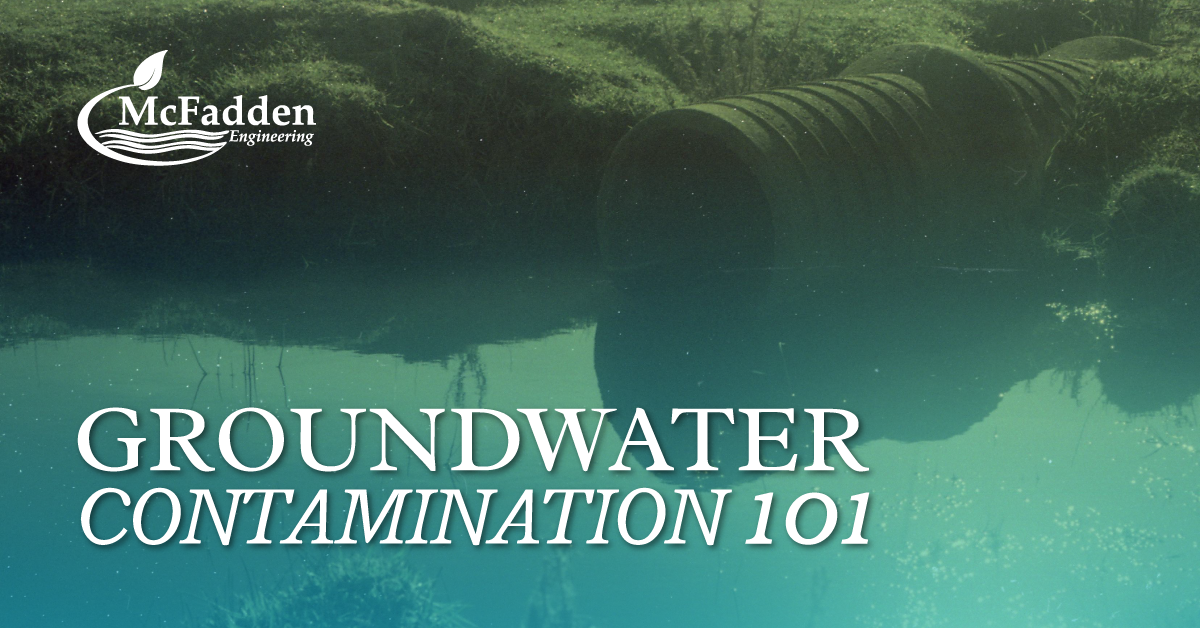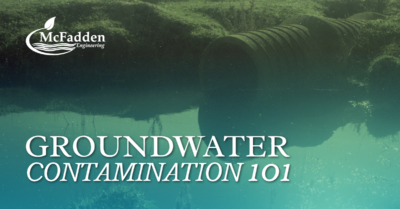Groundwater Contamination 101
February 14, 2025

Groundwater Contamination 101
Groundwater, the water found underground in soil, is among our most vital resources on Earth, but it is vulnerable to pollution. Groundwater contamination is typically caused by human-made substances like gasoline, oil, road salts and chemicals as they seep into the groundwater, making it unsafe for use. Pollutants from the land’s surface can infiltrate the soil and reach groundwater supplies. Over time, pesticides and fertilizers, as well as road salts, toxic mining waste and used motor oil, can contaminate the groundwater. Additionally, untreated waste from septic systems and hazardous chemicals from underground storage tanks or leaking landfills can further degrade water quality.
How Groundwater Contamination Occurs
The movement of a groundwater contaminant released into the environment depends on its physical, chemical and biological properties. Some contaminants travel through an aquifer in the same way the groundwater does, while others, due to their specific properties, may not follow the natural flow of groundwater. However, the movement of substances that do flow with groundwater can be predicted to some extent and potential sources for groundwater contamination can be identified.
Potential Sources of Groundwater Contamination
Storage Tanks: These tanks, which hold gasoline, oil, chemicals or other liquids, can be located above or below ground. Storage tanks can corrode, crack and develop leaks over time.
Septic Systems: If septic systems are poorly designed, improperly located or not maintained, they can leak bacteria, viruses, household chemicals and other pollutants into groundwater, leading to serious contamination.
Uncontrolled Hazardous Waste: Barrels or containers filled with hazardous materials are left exposed and begin to leak; these substances can infiltrate the soil and contaminate groundwater.
Landfills: If the barrier of landfill sites is absent or damaged, harmful substances such as car battery acid, paint and household cleaners can seep into the groundwater supply.
Chemicals and Road Salts: Chemicals used in agriculture, landscaping, homes and businesses — such as pesticides, herbicides and fertilizers — can infiltrate groundwater when it rains. Road salts, applied in winter to melt ice, can also be washed off roads and eventually enter groundwater sources.
Atmospheric Contaminants: Because groundwater is part of the hydrologic cycle, pollutants from other parts of the cycle — such as the atmosphere and surface water (the water in rivers, lakes, ice and snow) — can eventually make their way into groundwater supplies.
Site Assessments and Remediation to Stop or Prevent Groundwater Contamination
Professional site assessments involve determining previous site activities, reviewing available public records, conducting physical inspections, interviewing relevant parties and performing additional evaluations as needed, all in compliance with ASTM (American Society for Testing and Materials) standards. If initial findings indicate environmental concerns, McFadden Engineering has the expertise to conduct further investigations (Phase II Site Assessment), identify the horizontal and vertical extent of contamination in groundwater and develop and implement effective remediation strategies. The proper implementation of remediation strategies is necessary for the ongoing maintenance of sites where groundwater contamination might occur.
Additionally, water quality modeling helps assess the environmental impact of activities such as wastewater treatment plant discharges, industrial operations and commercial development. Our engineers specialize in creating advanced water quality models and interpreting results for private clients, municipalities and regulatory agencies. By utilizing these services offered by McFadden, our clients can see the weaknesses in their operations in the models we create. Then, we can work to combat these weaknesses.
McFadden Engineering’s team of water and wastewater experts specializes in providing environmentally sound solutions to solve unique civil and environmental engineering needs. McFadden Engineering has worked on projects including environmental permitting for municipal, commercial and industrial dischargers, site assessments and remediation, master planning for utilities, water quality projects and wastewater process design. Visit our website for more information.
